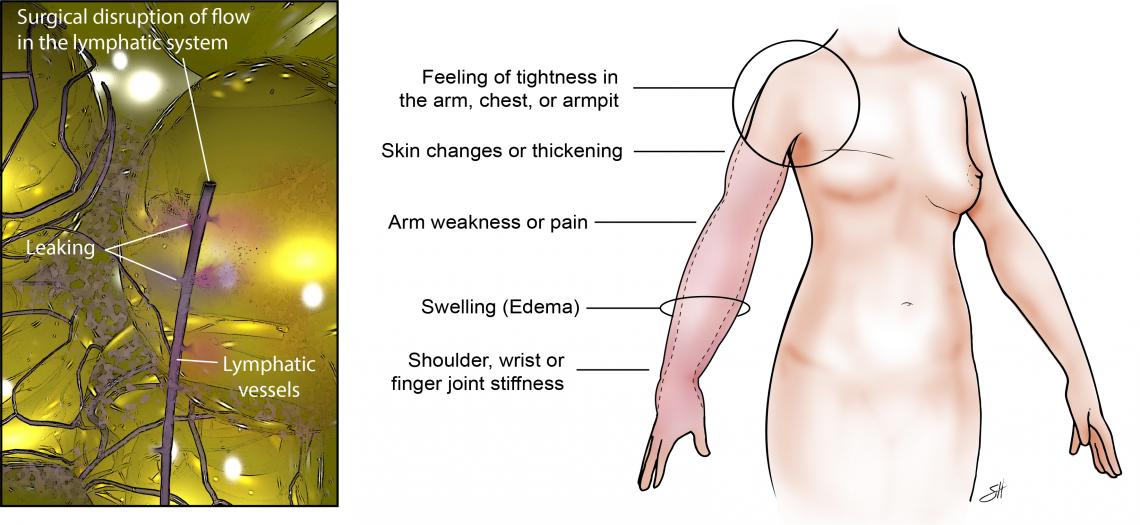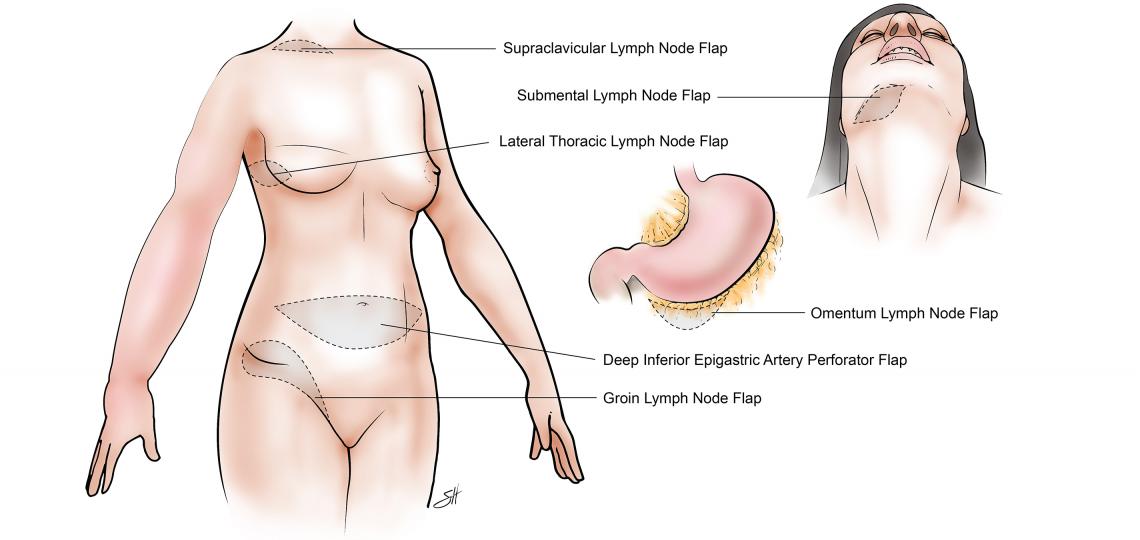What is lymphedema?
Lymphedema is a condition that occurs when there is damage to the lymph system, causing a collection of fluid in one or more areas of the body. The swelling can occur in the arm, breast, chest or leg area. Patients who have had their lymph nodes removed due to cancer are more likely to develop lymphedema.
If you have had a lymph node procedure, here are some ways to alleviate or prevent lymphedema:
- Eat a healthy diet, exercise, and avoid weight gain.
- If you get any small cuts or abrasions to the arm or finger, wash and apply antibiotic ointment right away and then cover the wound.
- If you note a skin infection, seek medical treatment immediately.
- If possible try to avoid routine needle sticks or blood pressure taken on the side of the body where the lymph nodes were removed. Also, avoid IV placement or immunizations to the side where the lymph nodes were removed.
Non-Surgical Lymphedema Treatments
There are many non-surgical treatments for lymphedema, many of which can be done at home and with the help of rehabilitation, occupational, or physical therapist. These include elevating the affected limb, compression therapy, massage and or physical therapy. Your doctor will discuss these options with you and manage your progress. In many cases, non-surgical treatments are not just the first step to improve day-to-day symptoms. They are also the first step toward becoming a good candidate for surgery and optimize your chances for a successful surgical outcome.
Surgical Treatments for Lymphedema
Baylor Medicine employs a multidisciplinary approach to taking care of patients with lymphedema, and together, we are committed to providing cutting edge, super microsurgical treatment to our patients.
Lymphovenous Anastomosis, also known as Lymphovenous Bypass: In this minimally invasive procedure, the surgeon uses super-microsurgery techniques and instruments to reroute blockages in the lymphatic system. Damaged lymphatic channels result in blockages that prevent the normal flow of lymphatic fluid out of the arm or leg. These blocked lymphatics are identified, and the flow of lymphatic fluid is surgically redirected by connecting the lymphatics to small nearby veins, effectively creating a detour around the blockade. This is a relatively quick outpatient procedure that helps decrease swelling and improves symptoms. Barring any complications, patients can return to work within a couple of days.
Vascularized Lymph Node Transfer: In this procedure, the surgeon carefully selects a group of healthy lymph nodes from a different part of the body and transplants them with their blood supply to the problem area using microsurgery techniques. These lymph nodes then work in the diseased area to improve lymphatic drainage and treat the affected arm or leg. This is done as an inpatient procedure with a 3-5 day hospital stay, and patients usually return to regular work within a few weeks.
Liposuction: Sometimes when lymphatic fluid seeps into surrounding tissue it can cause the growth of fat cells and thickened scar tissue under the skin. A liposuction procedure removes those extra and scarred fat caused by that process and “debulks” the affected arm or leg. This surgery is rather quick and painless and can be done in a matter of hours, as an outpatient procedure.








 Credit
Credit


